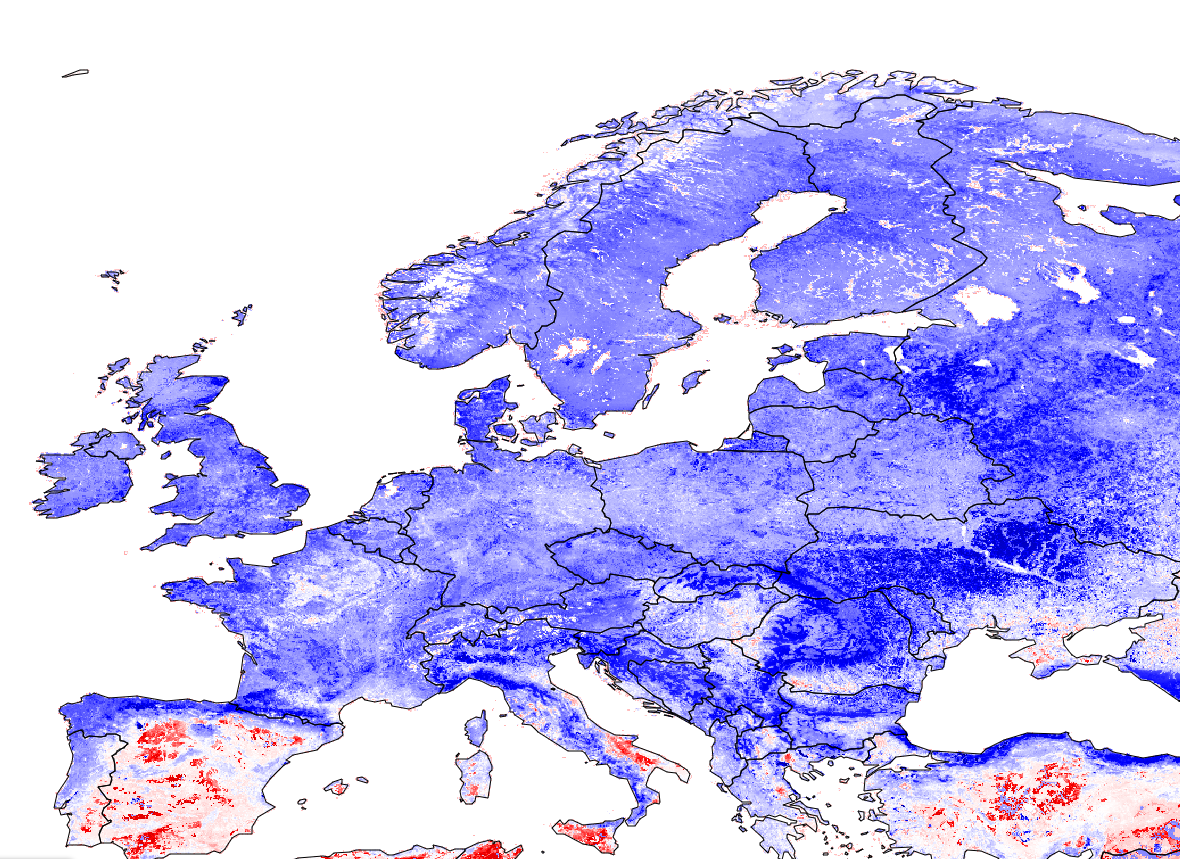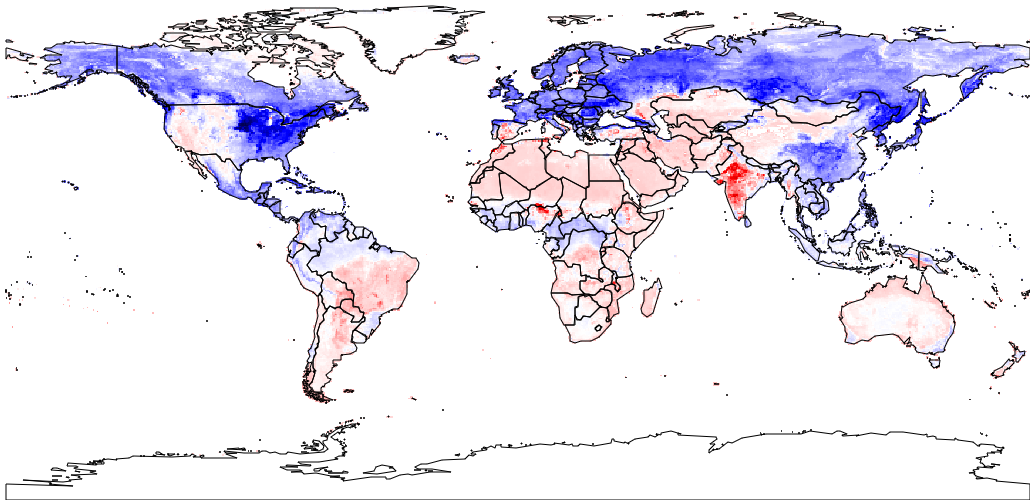
The 2015 Paris Agreement created a virtuous circle between the scientific community and societal actors, placing science at the centre of the decision-making process: national inventories, assessment of policies and mitigation actions all rely on available greenhouse gas science. For researchers, this sets two ambitious expectations: reducing the uncertainties in the global carbon cycle and delivering near-real-time, usable, data-based products. The "Pilot 7.1" from the e-Shape initiative addresses these expectations, using a tight integration of ground-based and space-based observations in a data-driven model.
e-Shape is a multilevel, multidisciplinary European initiative to build concrete Earth observation services for end-users. The project facilitates scientific cooperation and coordinated joint action, focusing on seven areas of activity, each divided into several pilots. The "Pilot 7.1", centred on global carbon and greenhouse gases, is a model-based, data-driven project with many applications. Among others, the e-Shape Pilot 7.1 supports the Global Carbon Budget exercise and contributes to setting up a semi-operational system of near-real-time datasets on land carbon fluxes at a high resolution. Pilot 7.1 also aims at reducing uncertainties in ocean carbon sink estimates and helps to improve the separation of human and natural carbon fluxes using satellite observations.
The e-Shape Pilot 7.1 integrates station and satellite observations into a suite of data-driven products created by the FLUXCOM team* to achieve this wide range of tasks. These data-driven, global gridded products estimate gross primary productivity (GPP) and net ecosystem exchange (NEE) using satellite observations, in situ measurements and machine learning techniques. The newest version of these products integrates multiple global data sources, such as images from the Moderate Resolution Imaging Spectroradiometer (MODIS) aboard the Terra and Aqua satellites from NASA, which has been running for over twenty years. However, the FLUXCOM system can integrate newer remote sensing platforms, such as those aboard the Sentinel satellites from the European Copernicus Program. FLUXCOM, in its latest release, reaches an unprecedented spatial resolution of 0.05° with an hourly temporal resolution (vs 0.25° / daily for the previous version). "We also included much more fluxes in the model, such as total evapotranspiration and transpiration", explains Dr Nelson, a researcher at the Max Planck Institute for Biogeochemistry and a member of the group behind the project. "We spent much time building the process modularly: FLUXCOM can now absorb and seamlessly integrate new machine-learning techniques, datasets, and satellite products. We are working towards almost instantaneous global estimates."

A radically new approach to input data
"FLUXCOM is fundamentally different from other models," recalls Dr Jake Nelson. "It is one of the very few near-real-time models of this kind in Europe: we started from a data perspective and built a purely statistical model. We make fewer assumptions. We are seeing what's coming out of the data directly at very high resolutions, which gives us a complementary view compared to other predictions."
FLUXCOM also uses an innovative "plug-and-play" approach: the model can directly run machine-accessible data fluxes from observation networks to supply its algorithm for predictions. For example, when ICOS releases its yearly, final, fully quality-controlled observational data on ecosystems or the ocean, FLUXCOM can use it instantly. "There is almost no delay between the release of data and its use by the model," resumes Dr Nelson. "This is a big step towards timely predictions on global carbon and energy fluxes."
Another remarkable feature of FLUXCOM resides in its bottom-up approach to upscaling local data to global, wall-to-wall predictions. As a data-driven model, FLUXCOM depends on data quality, quantity, and diversity. It also depends on the machine-learning methods used to train its algorithm. FLUXCOM innovatively tackled these issues. To identify pertinent patterns, the model uses the continuously measured fluxes from 295 ground-based stations of the FLUXNET network, combined with satellite remote sensing explanatory variables, to feed, train and check its algorithm. "We try to make FLUXCOM as future-proof and adaptable as technically possible," says Jake Nelson. Lastly, FLUXCOM uses a 10-folds cross-validation strategy to train its algorithm and ensure the independence of the validation data from the training data.
Aiming at filling gaps and reducing uncertainties
Thanks to its singular approach, FLUXCOM generates predictions that cover the entire surface of the globe, including places where in situ measurements are scarce or nonexistent. FLUXCOM creates a value for each point of the terrestrial grid, which modellers can use as starting inputs in their work. FLUXCOM wall-to-wall gridded products, here again, are an essential contribution to reducing carbon cycle and energy uncertainties. "We are focusing a lot on data quality control and on understanding where our uncertainties are. In the new release, we correct the tendency of the model to exaggerate the carbon uptake. By improving the data we eventually use, we improve our global estimates," explains Jake Nelson.
FLUXCOM is also an independent reference for all physics-based models. Its forecasts can be used as comparison points to evaluate predictions made by other models, contributing to reducing uncertainties. "The process is similar to a policeman investigating a murder asking two independent witnesses what happened," says Elena Saltikoff, ICOS Head of Operations. "If the two independent witnesses, with two different points of view, tell the policeman a corroborating story, there are chances that this story is what happened. Now replace the policeman with a researcher, the witnesses with models, the murder with uncertainty, and you get how FLUXCOM works as an independent reference."
The ICOS datasets: the importance of long-term, high-quality input
FLUXCOM and the e-Shape initiative demonstrate the crucial importance of reliable, standardised, long-term observation data, highlighting the complementarity of remote sensing technologies with ground-based networks. "We are still data-limited: we need qualitative and standardised in situ data to improve FLUXCOM. We need the people on the ground, in the field, taking the measurements to understand what we don't know and improve the models and their estimates. Without in situ data, you cannot run a model such as FLUXCOM," notes Dr Nelson. With over 150 measurement stations in Europe and beyond, ICOS has developed a strong grid of in situ measuring stations equipped with state-of-the-art instruments, providing FAIR and TRUST data collected and processed under strict protocols. The data distributed by ICOS comes from long-term, continuous measurements and provides a solid base for training and cross-validation of data-driven models such as FLUXCOM. The e-Shape Pilot 7.1 uses data sets from two ICOS central facilities. The ICOS Ocean Thematic Centre provides data from 21 marine stations, including research vessels, moorings, buoys, and commercial vessels. The ICOS Ecosystem Thematic Centre provides data from 86 terrestrial stations in 14 countries. "Rapid and flawless integration of new data is one place where ICOS shines," assesses Jake Nelson. "We get standardised, state-of-the-art measurements ready to be used by us. And that's invaluable".
The FLUXCOM are available at ICOS Carbon Portal for preview or download as netcdf files using this search selection.
*FLUXCOM team: Sophia Walther, Martin Jung, Jacob A. Nelson, Fabian Gans, Ulrich Weber, Basil Kraft, Gregory Duveiller, Zayd Hamdi